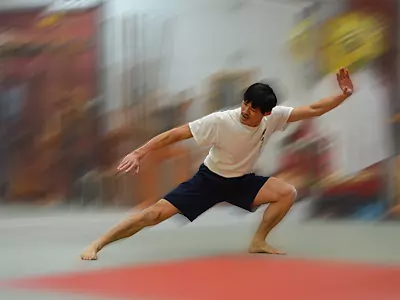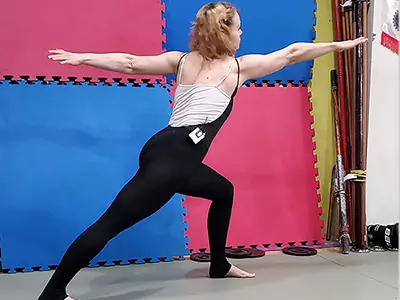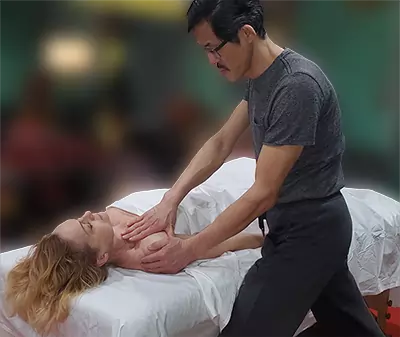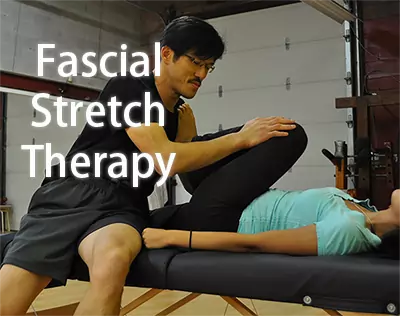Updated on Dec. 26, 2021
Why sitting causes lower back pain
The CBC reported that “Sitting is the new smoking” and it says a study finds exercise could make Canada $7.5B stronger. The workplace culture of sitting in the new epidemic that causes diabetes, cardiovascular diseases, cancer. Long periods of sitting weaken the muscles in our bodies and can potentially increase risks of lower back pain, sciatica, various joint disorders like knees pain, shoulder pain, elbow pain, ankle pain etc. Not to mention, the inactivity will lead to unhealthy weight gain. The “sitting disease” is one of the causes of diabetes and heart diseases.
Sitting disease – one of the causes of lower back pain
At a young age, we are exposed to the sitting culture. When we are old enough to attend kindergarten, we are drawn into sitting so we can learn. As we reach closer to adulthood, we have accumulated many hours of sitting, at our desks whether, at work, school or home. We sit hunched in front of the computers at work or school, we sit to watch TV, play video games, we sit in a car when we commute. The constant sitting in our lives is detrimental to our health.
type 2 diabetes and heart diseases
18 studies on nearly 800,000 participants by researchers at the University of Leicester and Loughborough University, concluded that “sedentary time…” (including sitting) “… is associated with an increased risk of diabetes, cardiovascular disease and all-cause mortality…”. The studies led by Dr. Emma Wilmot also suggested that “even if an individual meets typical physical activity guidelines, their health may still be compromised if they sit for long periods throughout the day“. The increased risks of type 2 diabetes and cardiovascular diseases are two-fold. The studies recommended limiting time spent on sitting to reduce our risk of diabetes, heart disease and death.
Lower back pain, sciatica risks from sitting too much
Long periods of sitting are the main cause of the majority of lower back disorders in North America. The prevalence of lower back disorders such as sciatica or sciatic nerve impingement, herniated disc, the strain on the lower back, etc is costly to workforce efficiency. An article in Wall Street Journal states that the lower back pain from sitting on chairs costs the American economy $70 billion a year.
According to the University of Iowa Hospitals and Clinics, the health of the lower back is affected by the following properties in the muscles: flexibility or “stretchiness”, strength and aerobic endurance. The best way to decrease the lower back pain is to make sure that the muscles are working at their best. Any insufficiencies in the previously mentioned attributes will trigger your muscles’ pain sensation mechanism telling you that something is wrong.
Flexibility:
Muscles, tendons, ligaments have natural elastic properties to function properly. When we are younger our muscles, tendons, ligaments are more elastic than when we are older. Toddlers, children, teenagers don’t usually have chronic back pain issues (although that may change as our teenagers are more interested in their video games). Inevitably as we age, our tissues become less elastic and so older people are less flexible than teenagers. Read about how flexibility slows ageing Those of us who already have poor flexibility and do not exercise often are more at risk of developing back pain. When we stretched our short, tightened muscles, the pain receptors within the muscles naturally respond to let us know that something is not right.
The long hours of sitting have kept our muscles in a fixed position, shortened their range of motion. Sitting has also weakened our muscles, tendons. Multiply the daily sitting routine by many years. By then, our muscles will become adapted to the sitting posture. If sitting is an Olympic sport, we will be some of the best athletes in the event.
Fortunately, the inflexibility issue is reversible through regular exercise, engaging in various stretching movements including lower back stretches through flexibility therapy, reduce long periods of sitting by taking frequent short breaks from sitting. It is easier to achieve sufficient flexibility at a younger age than when we are older. When we are older, we have to deal with the issues and challenges of the natural ageing process.
Nevertheless, it is not too late to reverse the negative effects of inflexibility. As they say, Better Late Than Never!
Strength:
Long periods of sitting, year in, year out without regular exercise has led to many cases of weakened core and hip muscles. Our muscles have adapted to the new sedentary environment and become de-conditioned. As our muscles further de-condition themselves, we lack the glute activation to hold up our bodies when we need to stand up on our feet, our weakened core muscles no longer have the capacity to support our upper torso when we bend over the sink to brush our teeth. It is a vicious cycle, when our bodies’ structural integrity is compromised, we naturally will rely on other parts of the body and the joints that are playing assisting supporting roles now have to put up more effort and end up being the main body part to hold up the entire body weight. Over the long term in addition to lower back pain, the weakness will result in knee pains and ankle pains as well.
The weight gain due to inactivity, from too much sitting, also puts an additional load on the joints. The joints have to carry the extra weight. The already weakened joints are more prone to strain or injury that can result from unexpected sudden movements.
Endurance:
If our cardiovascular or aerobic endurance and muscular endurance are lacking, we are unlikely to continue to work out to address the flexibility and strength issues. As we age, our cardiovascular endurance capacity declines. Recommendation: We need to take a holistic approach to address the lower back pain issues. It is not enough to focus only on building strength. We also need to develop flexibility and muscular endurance.
For the athlete in you, the well-timed engagements of flexibility and strength are the key to superb athletic performance. Dr. Stuart McGill, a spine biomechanics professor at the University of Waterloo, Ontario, Canada, dubbed the correctly timed combination engagements of flexibility, strength in the core ~ Superstiffness. The Superstiffness concept is what a lot of the elite athletes use. Baseball players engage their core via Superstiffness to swing their bats to score home runs, golf players drive the balls over 150 yards, mixed martial arts athletes swing their hips to deliver roundhouse kicks, etc. The activity of daily living (ADL) is the scale down version of high-level athletic performance. Being active and being mobile is key to lower back pain prevention.
Conclusion
The rise of lower back pain issues is mainly to our sedentary lifestyle. Compared to our ancestors, we move less now and live in an age of over-abundance. Unfortunately, the evolution of the human body has not caught up with the rate of modernization that has eliminated famine, more diseases, which our human body capacity is designed for. The majority of the causes of lower back pain ailments are due to long periods of sitting. Dubbed “sitting is the new smoking”, lack of movement during long periods of sitting has weakened the skeletal supporting muscles and kept certain muscles in our bodies shortened while causing other muscles to lengthen. To address the root cause of the lower back pain issues, we need to maintain our back flexibility, strength and overall aerobic endurance and muscular endurance. The approach to lower back pain remedial program design should be holistic.
References:
- Sedentary living is the ‘new smoking’ and we’re paying for it, study says, CBC News report, Oct 24, 2014, 9:33 PM ET, available on http://www.cbc.ca/news/business/sedentary-living-is-the-new-smoking-and-we-re-paying-for-it-study-says-1.2811872
- E. G. Wilmot, , C. L. Edwardson, , F. A. Achana, M. J. Davies, T. Gorely, L. J. Gray, K. Khunti, T. Yates, S. J. H. Biddle, Sedentary time in adults and the association with diabetes, cardiovascular disease and death: systematic review and meta-analysis, November 2012, Volume 55, Issue 11, pp 2895-2905, Available on: http://www2.le.ac.uk/offices/press/press-releases/2012/october/new-study-finds-that-sitting-for-protracted-periods-increases-the-risk-of-diabetes-heart-disease-and-death
- McGill, Stuart, Super Stiffness, available on: http://www.backfitpro.com/pdf/Enhancing_back_performance_with_super_stiffness.pdf
Images:
- Alex Rodriguez (NY Yankees) swinging baseball bat, photo by: Michelle Maria (www.wanderingsearching.com), available on: https://pixabay.com/en/alex-rodriguez-yankees-baseball-762074/
You may be interested in:
Functional Fitness & Strength

Our team of personal trainers can provide personal training in multiple programs: weight training, kettlebells, Essentrics, dance-inspired programs, martial arts training in traditional kung fu, kickboxing.
With a Registered Massage Therapist RMT in our team, Personal Trainer Toronto, has the capability to provide full-body assessments and prescribe therapeutic exercises.
More-about Functional Strength and Fitness programs
Kickboxing training

Kickboxing is a whole-body workout regimen that uses combinations of punching and kicking techniques
Fitness kickboxing is effective in training your core strength, improves stamina, better muscle tone.
The program is a combination of high-intensity interval training (HIIT) and aerobic training which is good for improving stamina.
Martial arts training

Apart from its self-defence applications, martial arts training program is used as a form of physical training for improving health and wellness.
Personal Trainer Toronto's martial art program is a well-rounded physical training regimen that improves muscle tone, helps with weight loss, and increases strength, flexibility, and coordination awareness.
The personal training in the martial art program is customized to address physical and structural balance issues.
More-about Martial Art program
Essentrics™-Dynamic stretching, strengthening

Essentrics™ is a dynamic stretching, strengthening program. The program is ideal for increasing mobility, range of motion (ROM), stress relief, relax tensed muscles.
More-about Essentrics™ program
Massage Therapy RMT

Our massage therapy sessions are provided by a Registered Massage Therapist RMT. Massage therapy treatments help to release stiffness in muscles, adhesions aka knots, aches and pains, joints stiffness.
If you have workplace health benefits or extended health coverage, you can offset the cost of the massage therapy sessions.
Fascial Stretch Therapy

Fascial Stretch Therapy is a stretching system developed by Stretch to Win. Elite athletes of NFL, NBA, NHL, martial artists and dancers have benefitted from the fascial stretching system to improve their game.
Fascial Stretch Therapy is a form of myofascial stretching therapy.